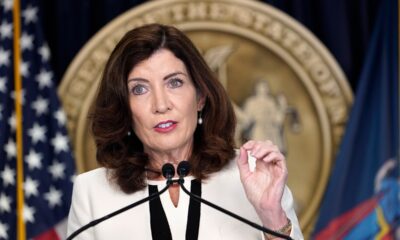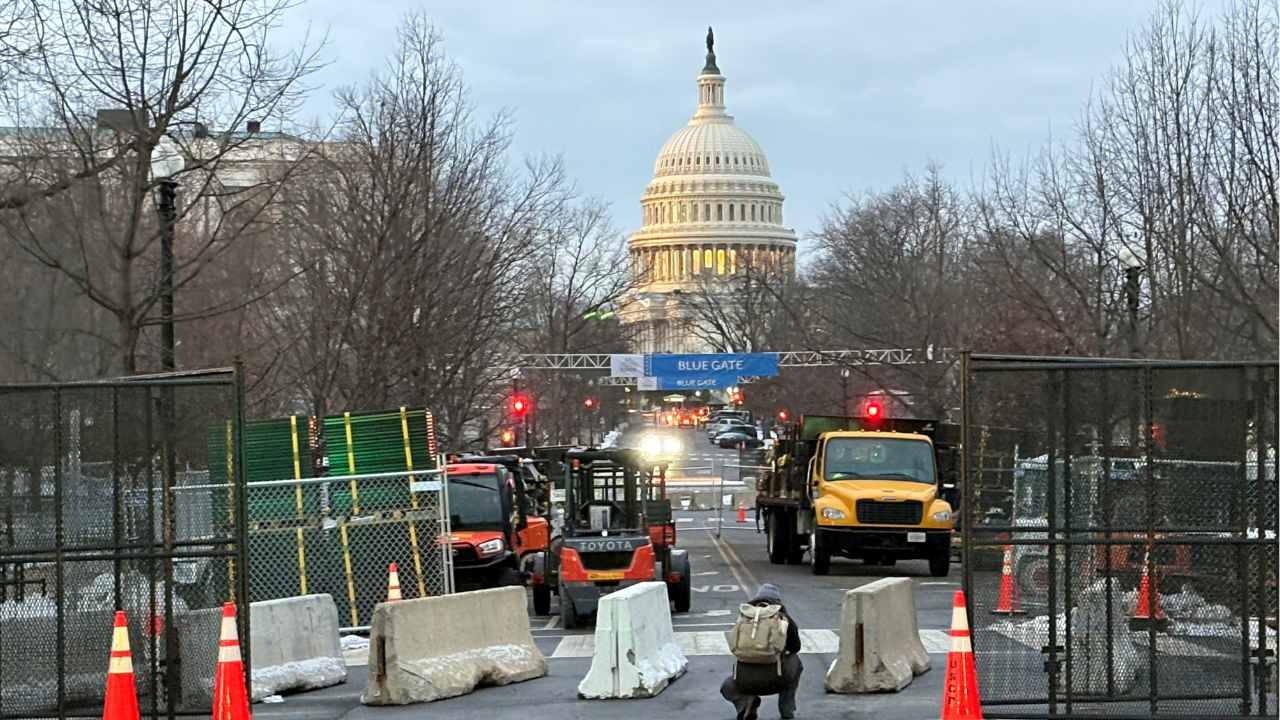President-elect Donald Trump’s inauguration ceremony is moving indoors to the Capitol rotunda due to a freezing blast of artic temps expected in D.C., he announced Friday.
In a post on his social media platform, Truth Social, Trump said he ordered Monday’s inauguration to be moved inside. The Joint Congressional Committee on Inauguration Ceremonies said in a statement that they’ll honor his request.
Of course, this last-minute change is having a major impact on everything from security to the thousands of spectators who booked hotel rooms and bought tickets to inaugural events.
Why is Trump’s second inauguration being held inside?
The D.C. area will be plunged into extreme cold as a piece of the polar vortex — an area of cold air that swirls around the Earth’s poles — brushes by the region.
Following some fresh snow during the day on Sunday, this extra-frigid air will move in Sunday night into Monday morning. Inauguration Day is often cold, but Monday looks to be especially brisk. The high is expected to be roughly 20°, with a low of 6°.
“There is an Arctic blast sweeping the Country,” Trump posted on Truth Social. “I don’t want to see people hurt, or injured, in any way. It is dangerous conditions for the tens of thousands of Law Enforcement, First Responders, Police K9s and even horses, and hundreds of thousands of supporters that will be outside for many hours on the 20th (In any event, if you decide to come, dress warmly!).”
What parts of the 2025 inauguration will be inside?
Trump’s swearing-in ceremony will be conducted in the rotunda, where he will also deliver his inaugural address.
“The various Dignitaries and Guests will be brought into the Capitol. This will be a very beautiful experience for all, and especially for the large TV audience!” Trump wrote on Truth Social.
Capital One Arena in downtown D.C. will open for people to watch the ceremony and inaugural address on live video.
Then, instead of the traditional parade down Pennsylvania Avenue, the president will join supporters at Capital One Arena after his speech.
“We will open Capital One Arena on Monday for LIVE viewing of this Historic event, and to host the Presidential Parade,” Trump posted on social media. “I will join the crowd at Capital One, after my Swearing In.”
Outdoor areas on the West Front of the U.S. Capitol, which were intended for tickets guests, will now be closed to those guests Monday, Capitol police said in a statement.
What’s staying the same?
Trump said in his post that other events would stay the same, including the victory rally at Capital One Arena scheduled for Sunday at 3 p.m.
He is still expected to attend three official inaugural balls Monday night.
If people had tickets to the inauguration, will they be able to use them at Capital One Arena?
Some 240,000 people hold tickets to attend inauguration on Monday. However, Capital One arena only can hold 20,000 people.
News4 is still waiting for information as to what’s going to happen with those ticket holders. As of late Friday afternoon, several congressional social media accounts said they didn’t yet know and that ticket holders should keep checking back.
Will the inauguration security perimeter change?
That’s not yet clear. The U.S. Secret Service tells News4 they have contingency plans for matters like this. They said they may hold a news conference later Friday night or Saturday to go over the changes.
Trump is holding a rally at Capital One Arena on Sunday afternoon, the day before inauguration. As of late Friday afternoon, there was limited fencing set up around the arena. It’s unclear if that will now change.
There may also be a contingency plan being worked on, in case protesters go to the arena after Trump is sworn into office.
Are the planned Metro station closures still happening?
As of late Friday afternoon, Metro officials couldn’t say yet if there were any plans to change the number of Metro stations to be closed or to cancel those closures now that there won’t be a parade.
The Gallery Place station next to Capital One Arena has entrances on H and F streets NW. Up until now, there were no plans to close those entrances outside the arena.
What other changes will have to happen?
It’s not just Metro and the Trump team that have to change everything. City leaders in D.C. have a lot of things that they have to now figure out.
There are 4,000 police officers coming in from around the country to line the parade route. Those officers will still be used because they still have to help watch the District to ensure everything is safe and to secure the areas around the inaugural balls.
When was the last time the inauguration was held inside?
President Ronald Reagan’s second inauguration in 1985 was held indoors due to a wind chill of -20°. It remains the coldest inauguration on record, with a high temperature of just 7°. The parade was also canceled that year, according to NBC News.






















/cdn.vox-cdn.com/uploads/chorus_asset/file/25822586/STK169_ZUCKERBERG_MAGA_STKS491_CVIRGINIA_A.jpg)

/cdn.vox-cdn.com/uploads/chorus_asset/file/25821992/videoframe_720397.png)



/cdn.vox-cdn.com/uploads/chorus_asset/file/23935558/acastro_STK103__01.jpg)
